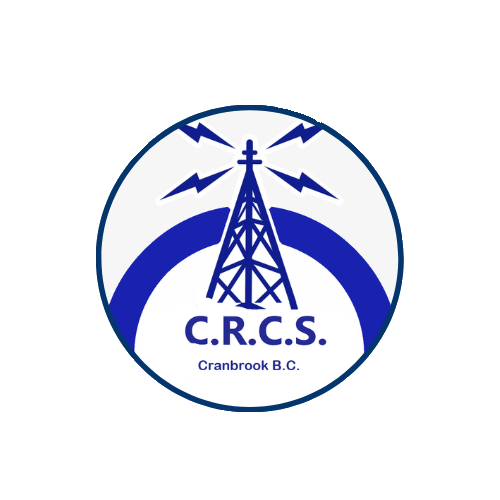If you’ve ever tried installing mobile antennas on fiberglass, carbon fiber, or plastic-bodied vehicles, you already know it isn’t as straightforward as mounting one on steel. Unlike traditional metal-bodied cars and trucks, non-metallic vehicles lack the natural ground plane that antennas depend on for proper performance. Whether you’re running a VHF/UHF whip for repeater access or experimenting with HF mobile operations, solving the ground plane problem is key.
In this guide, we’ll take a deep dive into installing mobile antennas on non-metallic vehicles. We’ll look at why ground planes matter, the most effective installation methods, and practical solutions for hams who want a solid mobile station even when their vehicle doesn’t play nice with traditional antenna theory.
Why Non-Metallic Vehicles Pose a Challenge
The Role of a Ground Plane
Every mobile antenna relies on a ground plane to work efficiently. A steel car roof or trunk lid effectively acts as the other half of a dipole antenna, helping to balance the radiation pattern and improve efficiency.
Non-metallic vehicles like RVs, boats, Jeeps with fiberglass tops, or electric cars with composite body panels don’t provide this conductive surface. As a result:
-
The antenna may have a poor SWR.
-
Transmit efficiency can drop significantly.
-
Radiation patterns can become unpredictable.
Examples of Problem Vehicles
-
Fiberglass RVs and campers
-
Jeeps with hard fiberglass tops
-
Boats with fiberglass hulls
-
EVs and hybrids with composite body panels
If you’ve tried simply slapping a mag-mount on a fiberglass roof, you’ve probably noticed that performance isn’t anywhere close to what you’d get on a steel vehicle.
Installation Options for Non-Metallic Vehicles
1. Use a No-Ground-Plane (NGP) Antenna System
One of the simplest ways to deal with the ground plane problem is to buy an antenna system designed for it. No-Ground-Plane (NGP) antennas use special matching networks and coax configurations to function without a large conductive surface.
Pros:
-
Plug-and-play solution
-
Great for CB, marine VHF, and certain commercial systems
-
Minimizes SWR headaches
Cons:
-
Limited gain compared to standard antennas
-
Not as efficient for amateur HF use
NGP antennas are a popular choice for fiberglass RVs and boats where traditional grounding isn’t possible.
2. Create an Artificial Ground Plane
If you prefer to stick with standard antennas, you can build your own ground plane. This usually involves adding radial wires or metallic sheets beneath the antenna.
Methods:
-
Attach several 1/4-wavelength radials at the antenna base, spreading them outward.
-
Run adhesive copper tape on the inside of a fiberglass roof under the antenna mount.
-
Use aluminum or stainless-steel plates as a “pseudo roof” for mag-mount antennas.
Tips for Radials:
-
For VHF/UHF, radials are short (about 19” for 2 meters).
-
For HF, radials need to be longer or tuned for the desired band.
-
Keep radials away from sharp bends and metal obstructions.
This solution takes more effort but offers excellent performance when done correctly.
3. Bumper and Hitch Mounts
For many hams, especially those using HF, bumper or trailer hitch mounts provide a solid alternative to roof installation. By bonding the mount to the vehicle chassis, you can take advantage of whatever conductive mass is available.
Best practices:
-
Ensure a low-resistance bond between the mount and the vehicle frame.
-
Use wide copper braid to connect the antenna mount to the chassis.
-
Consider adding radials or counterpoise wires if the chassis mass is limited.
4. Roof Racks and Custom Brackets
If your vehicle has a roof rack, you may be able to use it as part of the antenna system. By bonding the rack to the chassis with copper braid, you can simulate some of the function of a steel roof.
Options:
-
Clamp-on mounts designed for roof racks
-
L-brackets for side-mounting antennas
-
Bonding straps to reduce losses through rack joints
5. Through-Glass Antennas
Though generally less efficient, through-glass antennas can be used when no other mounting options are available. They capacitively couple through the glass, requiring no direct ground plane.
Pros:
-
Easy installation—no holes, no bonding
-
Clean look
Cons:
-
Limited power handling
-
Lower efficiency than external antennas
-
Poor performance for HF
For casual VHF/UHF mobile use, these may be acceptable.
Practical Installation Tips
Bonding Is Everything
When working with non-metallic vehicles, bonding any available conductive surfaces together is critical. For example, on an RV with a steel frame, make sure the antenna mount is bonded directly to the frame with copper braid.
Use Quality Coax
Losses are already higher when dealing with compromised ground planes. Using low-loss coax such as LMR-240 or LMR-400 can help maintain performance.
Keep It Simple for Beginners
If you’re new to installing mobile antennas, start with a commercial NGP antenna kit for your band of interest. Once you’re comfortable, experiment with building radials or bonding techniques to improve efficiency.
Always Measure SWR
Every installation is unique, especially on fiberglass and composite vehicles. Don’t assume your setup is working efficiently until you’ve checked it with a reliable SWR meter.
Case Study: Installing Mobile Antennas on a Fiberglass RV
Let’s walk through a real-world scenario.
The problem: A ham wants to run both VHF/UHF and HF from a fiberglass-bodied Class C RV.
The solution:
-
VHF/UHF: Install a commercial no-ground-plane antenna kit on the roof ladder. Bond the ladder to the RV chassis with copper braid.
-
HF: Mount a screwdriver antenna on the rear bumper hitch mount, bonded directly to the chassis. Add four 20-foot radials along the underside of the RV to improve the ground plane.
-
Coax: Use LMR-400 coax runs to minimize loss.
-
Testing: Measure SWR across the bands and adjust radials as necessary.
The result: Reliable VHF/UHF repeater access and usable HF performance across 20m–40m, even with the limitations of fiberglass construction.
Safety Considerations
-
Avoid power lines. Always double-check clearance before installing tall HF antennas on RVs or trucks.
-
Seal feedthroughs. If drilling into fiberglass, seal all holes with marine-grade sealant to prevent leaks.
-
Watch RF exposure. In mobile HF, the operator and passengers may be close to the antenna. Ensure your setup meets FCC exposure guidelines.
Installing mobile antennas on non-metallic vehicles isn’t impossible—it just takes a bit more creativity and understanding of antenna theory. Whether you opt for a no-ground-plane system, build your own radial ground plane, or bond a roof rack into service, there are plenty of ways to make your fiberglass or composite-bodied vehicle radio-friendly.
The key is to experiment, measure, and refine. With the right installation, even a fiberglass RV or EV can become a solid mobile ham station.




